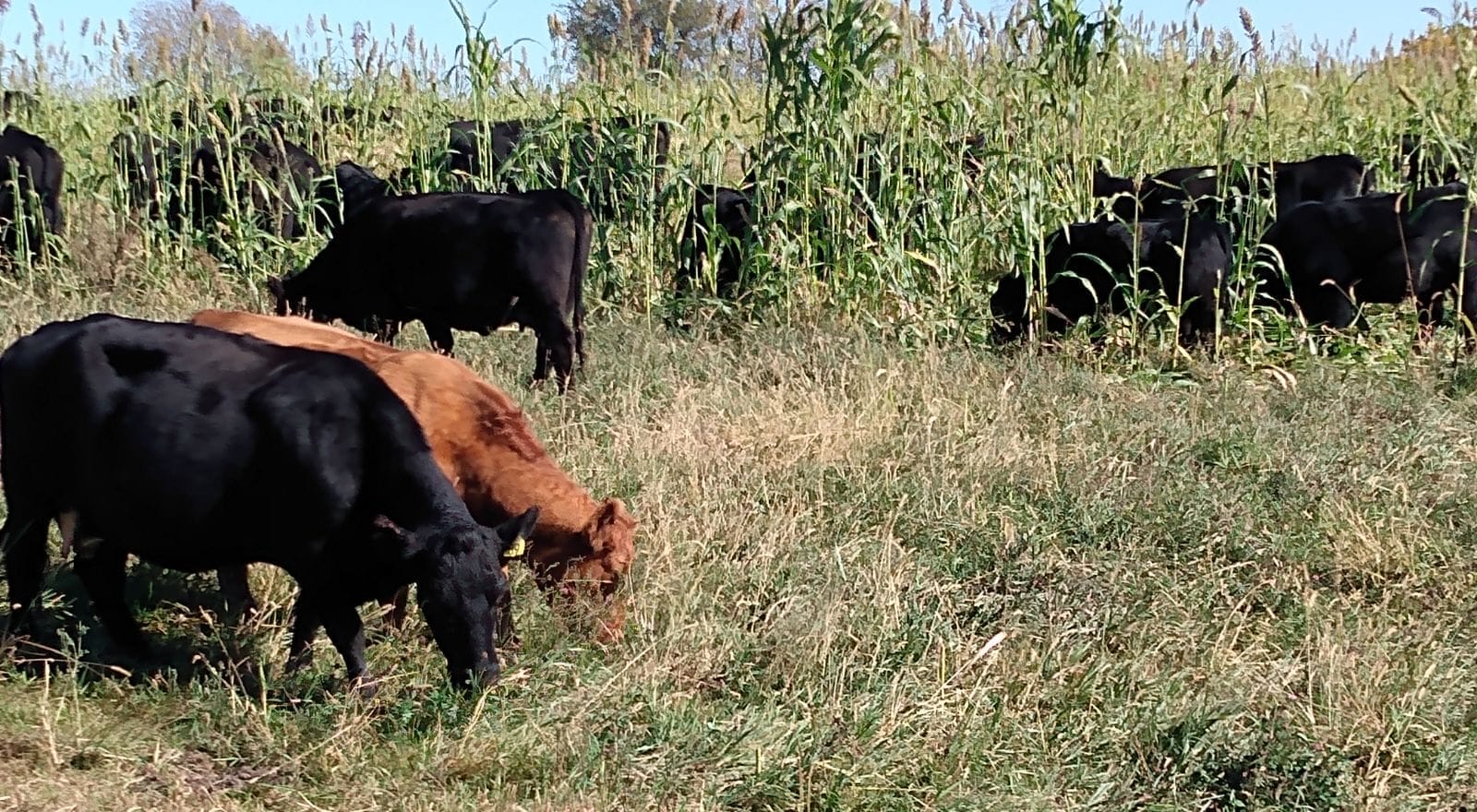Adding Forage Substance to Sparse Spring Cereal Rye Stands
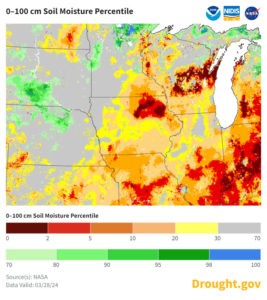
Lower than average soil moisture prompts farmers to think about what crops will perform in dry conditions. Source: drought.gov.
Like the weather this late winter and spring, there may be a lot of highs and lows on your mind: the projected low prices of corn and soybeans, the high prices of hay and cattle, and the low amount of moisture in the soil profile across the Midwest.
With the roller coaster of factors, it may be worth considering pivoting away from corn and soybeans on some fields, toward additional forage crops.
Spurred by an email discussion, farmers Dennis McLaughlin (Cumming, Iowa), Nick Smith (Epworth, Iowa) and Wade Dooley (Albion, Iowa) share their thoughts on planting oats into an established and potentially sparse, spring cereal rye stand to obtain additional forage. They also discuss other options, such as summer annuals, which may outperform corn or soybeans in droughts.
Thick or Thin: How Does Your Stand Look?
One of the first things to consider is the rye stand. Is it thick or is it thin? If it’s on the thinner side, Dennis advises to consider adding a mix. Dennis says, “My rye was aerial seeded on soybeans and is usually pretty uneven, so the oat-pea mix tends to grow better in the thin places and helps control weeds.”
However, he cautions that the rye will compete with the oats, and he tries to graze the rye down as much as possible to give the oats a chance at growing alongside the rye. While Dennis uses a conventional drill to enhance the stand, he had issues getting the oat-pea seeds to depth and wagers that a no-till drill might perform better.
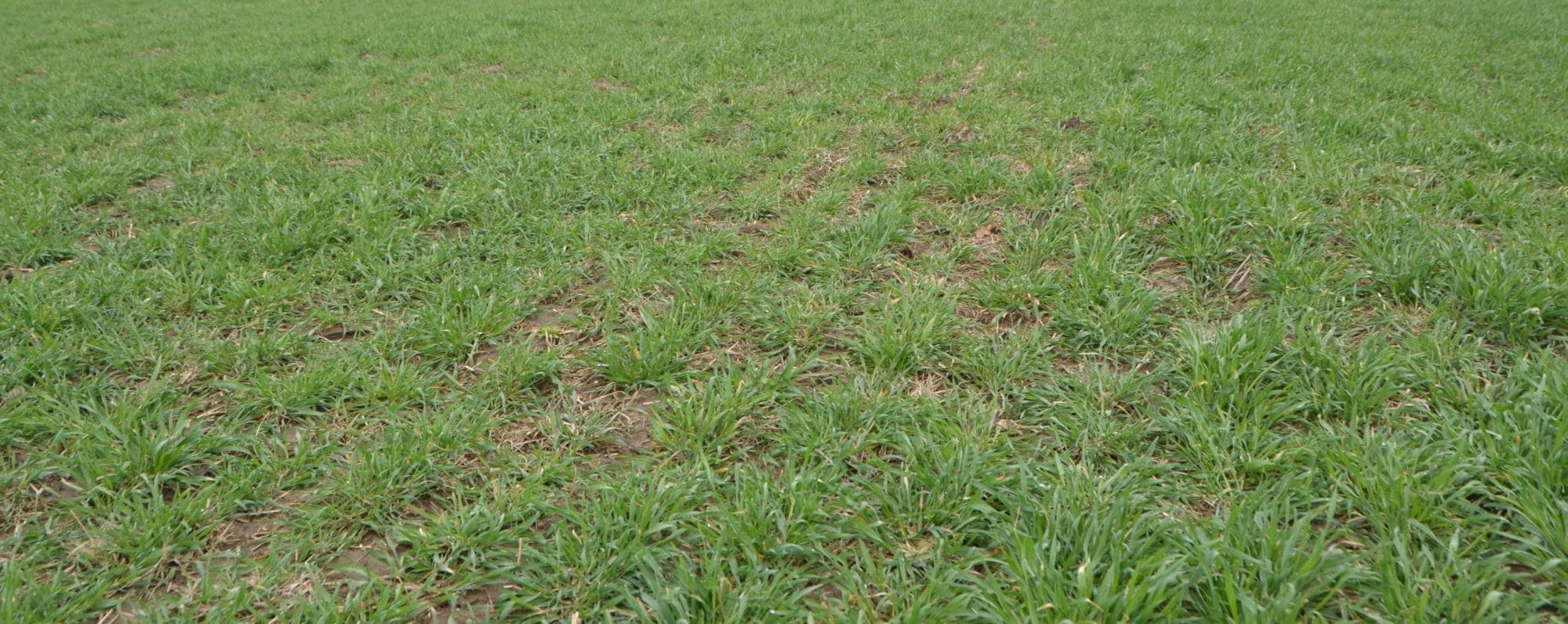
If an established rye stand is thick like this early-season rye at Wade Dooley’s farm in Albion, Iowa, you may not need to seed another forage into it.
Nick, who supplements an overwintered rye cover with oats and barley, has also had issues with thick rye dominating a spring seeding, saying, “I would kill the rye first. Anywhere that the rye was “good” the oats-barley was minimal.”
Wade adds that if the rye is currently being grazed and the stand is not thick enough, then interseeding could counter any opportunity weeds have.
Hedging for Summer Forage Quantity and Quality in a Moisture Shortage
Despite some precipitation in central Iowa recently, we still have a dry soil profile this spring. Rather than focusing on spring grazing, Wade suggests planting a perennial with the oats in the spring, considering it might be a challenge to get anything established during the drier summer months. “Given that a large percentage of the state of Iowa is running on a water deficit, I’d be very concerned with competition for moisture,” says Wade.
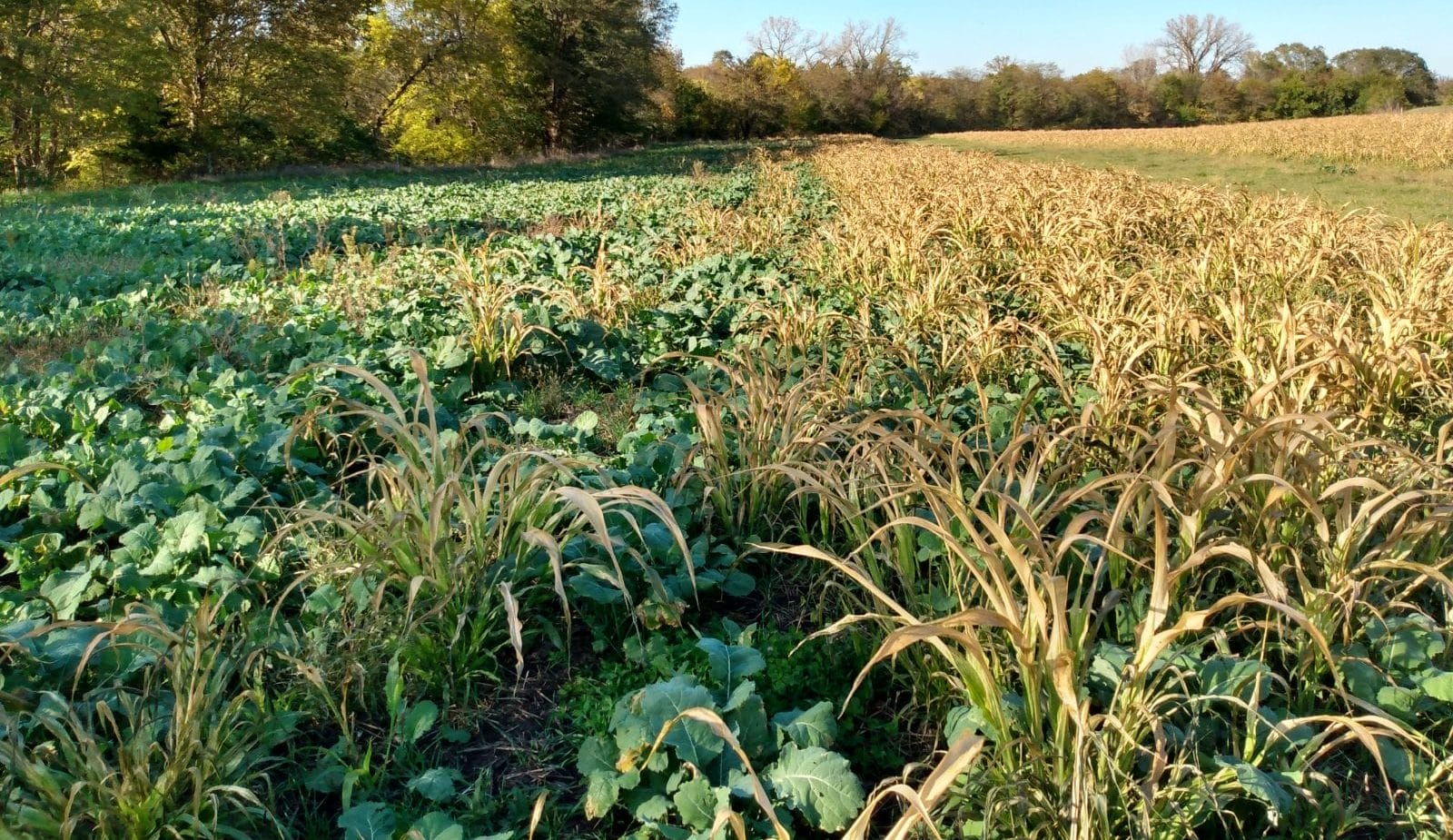
Side by side comparison of collards with and without sorghum-sudan on Dennis’s farm in Cumming, Iowa. Without sorghum-sudan (left) and frost killed sorghum-sudan with few collards (right).
Dennis has tried a mix of orchardgrass, alfalfa, brome and red clover with the oats, but notes that it did not provide as much fall forage in comparison to his sorghum-sudan. “I did find that collards [seeded with sorghum-sudan] regrew into fall and did provide decent forage.”
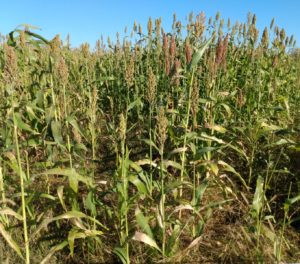
The sorghum-sudan planted after an oat-pea mixture on Dennis McLaughlin’s farm provides a lot of tonnage for his cattle.
Recently, Dennis has followed his oat-pea mix with a summer annual mix containing sorghum-sudan.
Nick has also had good experiences with sorghum-sudan, adding, “We planted a cocktail of sorghum-sudans behind it, and that works quite well if you can get ample moisture to get the sorghum-sudan going right after planting. Most years this is not a problem in eastern Iowa.”
Wade concurs with this sentiment, noting, “If the profitability of corn is in question, one must also consider the profitability of grazing annuals in a drought scenario.”
Since Nick has had issues with getting a spring mix established in a cereal rye stand, after he terminates the rye in the early spring, he no-till drills a cool-season mix as soon as possible. His go-to mix for balancing forage quality and tonnage is spring oats, spring barley and three to four pounds/acre of red clover.
After the spring mix is cut, Nick plants sorghum-sudan in mid-June. The pre-established red clover and sorghum-sudan provides cuttings at the tail end of July and mid-September.
Nick does a third planting of cereal rye and oats into the sorghum-sudan stubble, which he grazes in the fall and spring. Nick comments, “This works really well and is really cheap, if you are willing to drill the same field three times in one year!”
Considerations for Baling
While Nick has experience baling barley, oats and rye together, he does not recommend it. With the rye maturing before the oats, the baled oat and rye mix was an undesirable combination of high carbon, straw-like rye biomass with the more supple oats.
He explains, “The cows picked through the bales quite a bit and basically refused to eat a lot of the rye because it was close to being like straw. Keep in mind the oats and barley are ready to take as a forage in mid-late June depending on the year. Rye is pretty mature by then.”
Nick suggested that chopping the three species and mixing could help with palatability, but there is the tradeoff of increased cost.
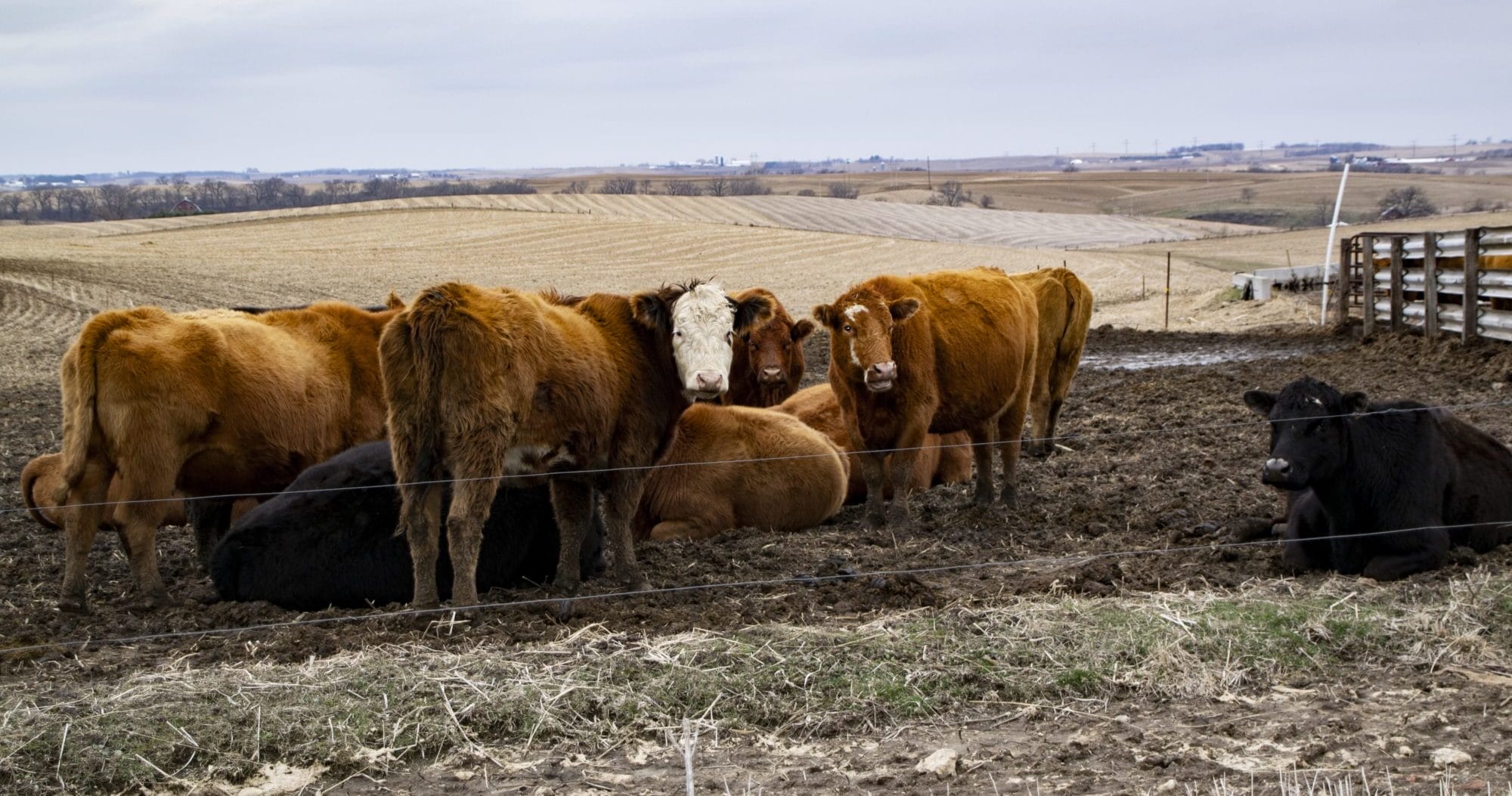
Nick Smith’s cattle on his farm near Epworth, Iowa. He does not recommend baling barley, oats and rye together as the cows pick through the unpalatable straw-like material.
Dennis has had a different experience, stating that, “The cows seem to relish the [baled] mix of oats, peas, rye and weeds when fed as winter hay and/or bedding. Well bed is half fed.”
What works for these producers may not work for everyone, but it is worth exploring options. Wade encourages and cautions, “Mix it up, add some other cool-season species and seed types, and see what succeeds. But also, be very mindful of cost!”
Related Resources
“The Silver Lining Of Drought” published by Green Cover
“Annual Forages Contribute to Year-Round Grazing” published by Practical Farmers of Iowa

